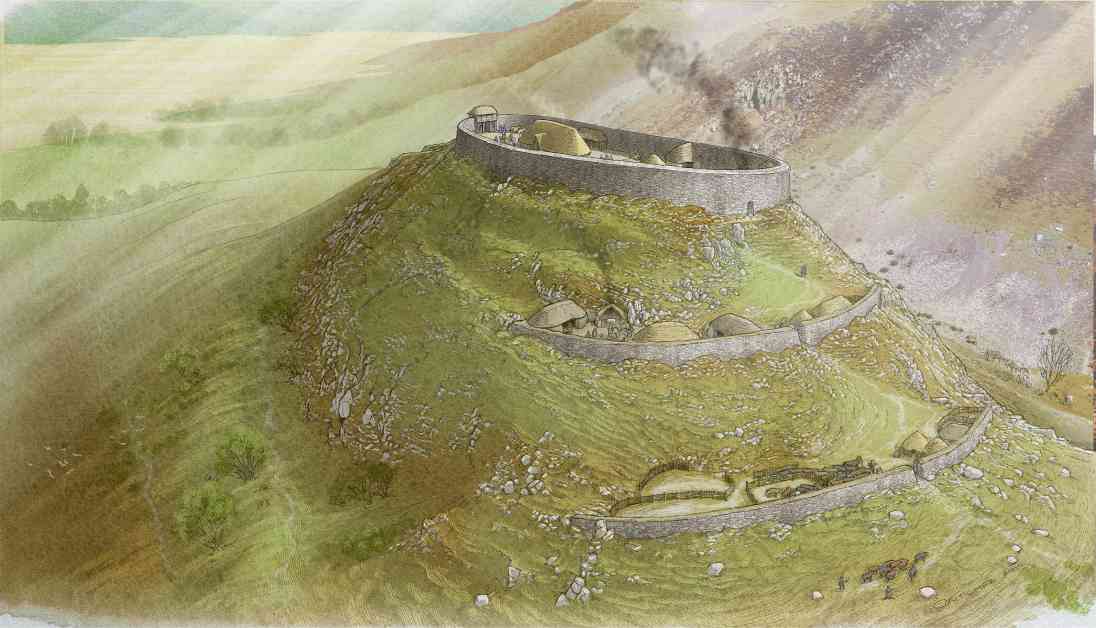Uncovering Merlin’s Roots: Archaeology Projects Nominated for Top Award
In a quest to unravel the mysteries of the mythical Merlin in the Scottish Borders and delve into the illicit origins of whisky production in the Highlands, two groundbreaking community projects have been nominated for the prestigious Archaeological Research Project of the Year Award. These projects, driven by a passion for uncovering the past, have captured the imagination of the public and shed new light on Scotland’s rich history.
Drumelzier’s Hidden Heritage
The first project, Drumelzier’s Hidden Heritage, led by the Arthur Trail Association and GUARD Archaeology, embarked on a mission to trace the village’s connections to the legendary figure of Merlin. The story of Merlin, also known as Lailoken, was intricately woven into the fabric of Scottish folklore, with ties to the ancient story of King Arthur’s magician buried in the vicinity. Through meticulous fieldwork and collaboration with volunteers, local heritage groups, and specialists, the team unearthed tantalizing clues that hinted at the veracity of the tale.
A geophysics survey revealed the presence of an archaeological feature resembling a grave near Merlin’s reputed burial site at Drumelzier. Furthermore, excavations at Tinnis Castle, a site linked to the Merlin legend, unveiled evidence of occupation during the period corresponding to the story’s timeline, showcasing the hallmarks of a lordly stronghold of that era. These findings not only validated aspects of the myth but also highlighted the rich historical tapestry of southern Scotland.
The Pioneering Spirit Project
Transitioning from ancient lore to more contemporary history, The Pioneering Spirit Project, spearheaded by the National Trust for Scotland and The Glenlivet, delved into the clandestine beginnings of whisky production in the Scottish Highlands. From illicit stills hidden in the hills to the rise of industrial distilleries, the project uncovered the evolution of whisky-making against the backdrop of Scotland’s rugged landscape.
Excavations at Upper Drumin, the original site of The Glenlivet Distillery, unveiled remnants of the still room where George Smith established his first legal distillery in 1824. The discovery of fire pits, copper piping, drinking glasses, and other artifacts provided a glimpse into the ingenuity and craftsmanship of early whisky makers. The collaboration between archaeological volunteers, locals, and partners at The Glenlivet enriched the project, offering valuable insights into the heritage of whisky production.
Public Participation and Recognition
Both projects have captivated the public’s interest and garnered nominations for the prestigious Archaeological Research Project of the Year Award, a testament to the dedication and enthusiasm of the teams involved. The involvement of volunteers, experts, and organizations in these initiatives has not only unearthed hidden treasures but also fostered a deeper understanding of Scotland’s cultural heritage.
As the voting deadline approaches on February 10, 2025, individuals have the opportunity to cast their votes for the projects, publications, and individuals they believe deserve recognition. The winners will be announced on March 1 at the Current Archaeology Live! 2025 Conference, celebrating the achievements of those dedicated to uncovering Scotland’s rich history.
































